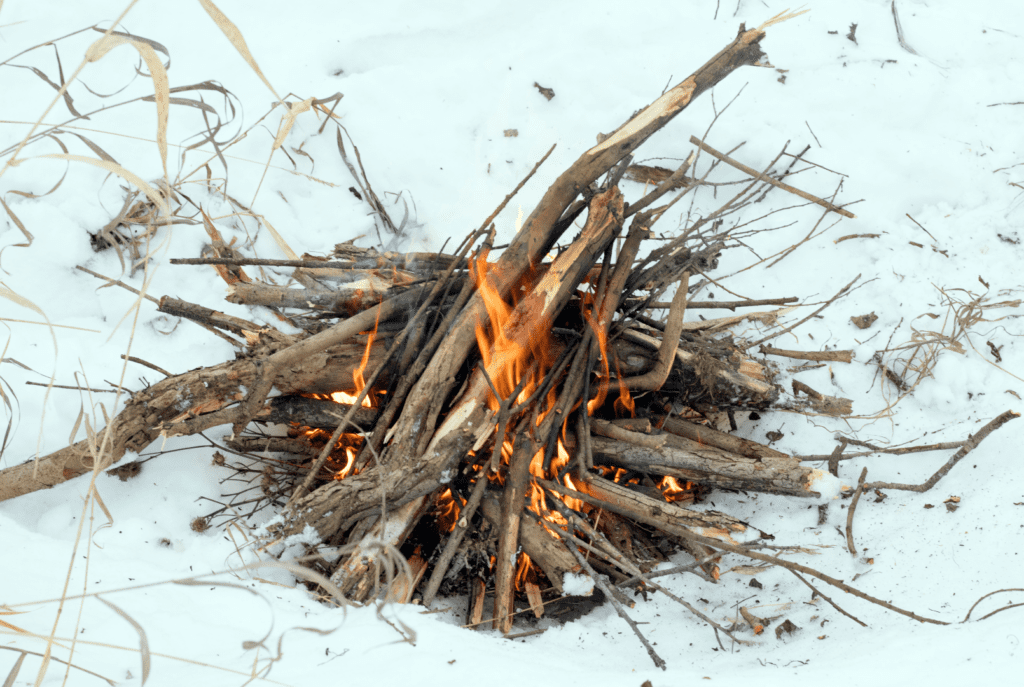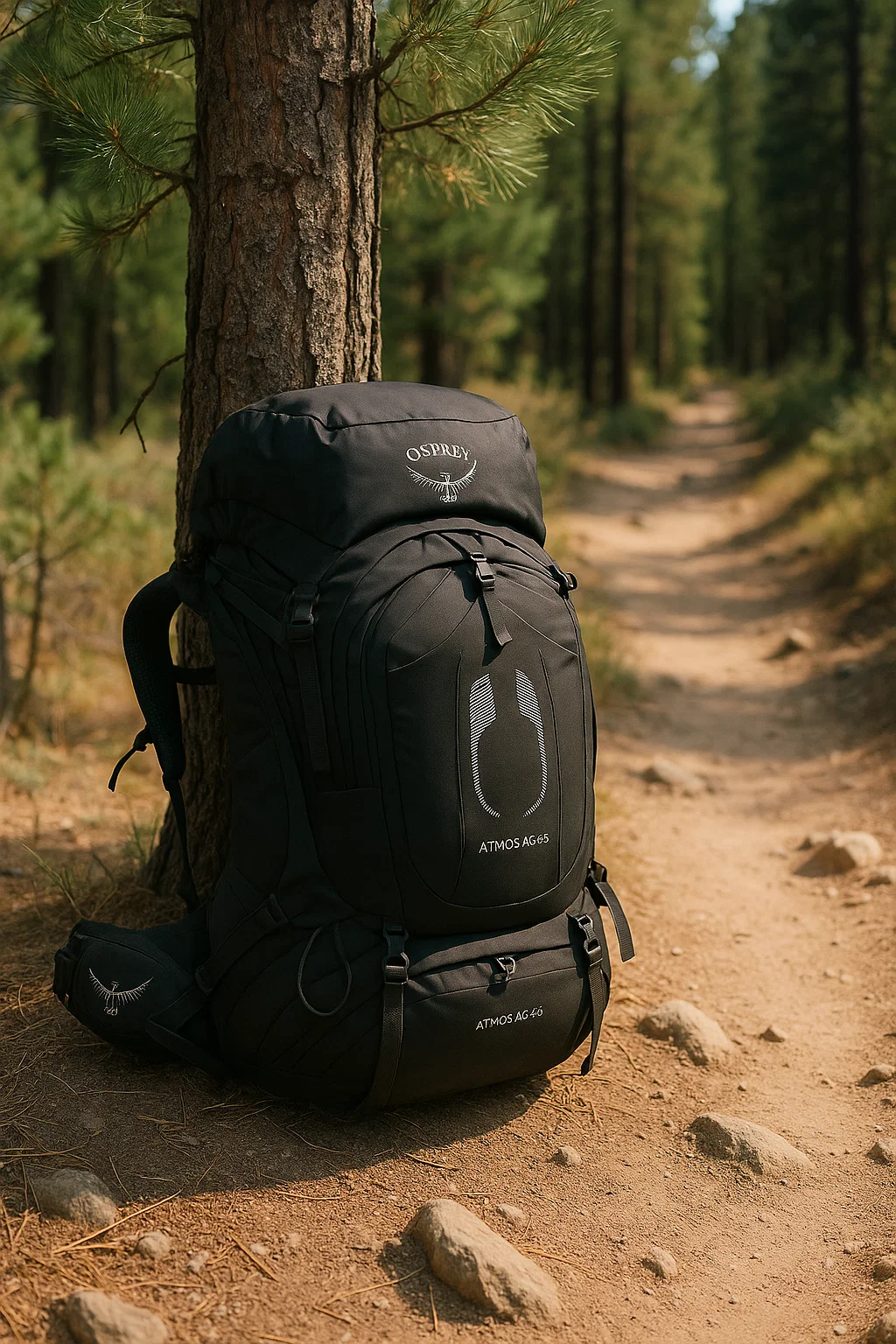In the heart of the wilderness, the ability to start a fire is a pivotal survival skill. Whether you’re deep in the mountains on a solo excursion or camping with friends, mastering backcountry fire building techniques is not just about comfort; it’s a matter of safety. Capturing the quintessence of self-reliance, fire serves as a source of warmth, a means to cook food, and a beacon of hope in the dark.
Now, I understand the significance of these techniques firsthand. I’ve hiked trails where sudden drops in temperature made me grateful for my knowledge of effective fire starting. In this article, I’ll detail four traditional methods: the teepee, log cabin, lean-to, and platform. These tried and true approaches have stood the test of time, offering reliable means to generate heat and light, even when modern conveniences are miles away.
Traditional Fire-Building Methods
When it comes to picking the right method, there are a few questions to ask. What’s the weather like? How much fuel have I gathered? Is there a need to minimize my environmental impact? Speaking of which, the Leave No Trace principles are non-negotiable. Mind where you’re setting up, always use existing fire rings when available, and ensure your fire leaves as little trace as possible on the natural surroundings.

Teepee
The teepee fire building technique is effective because it creates a structure that allows for good airflow, promoting efficient combustion. It’s a reliable method that can produce a long-lasting and steady fire for cooking, warmth, or other purposes.
Prepare the Base: Start by clearing the ground and creating a flat surface for your fire. You can use rocks or a metal fire ring to contain the fire if desired.
Gather Materials: Collect your fire-building materials, including tinder, kindling, and fuelwood. Tinder can be small, dry materials like leaves, grass, or small twigs. Kindling consists of slightly larger pieces of wood, while fuelwood refers to larger logs or branches.
Create a Center Point: Place a small pile of tinder in the center of the fire base. This will be the initial fuel to ignite the fire.
Build the Teepee Structure: Take several pieces of kindling and lean them against each other in a teepee shape, with their tops meeting at the center point where the tinder is located. Angle them slightly inward to create a stable structure.
Add More Layers: Gradually add more layers of kindling around the initial structure, continuing to lean them against each other in a teepee shape. As you add more layers, increase the size of the kindling to gradually build up the teepee.
Leave an Opening: Make sure to leave a small opening in the teepee structure to allow you to ignite the tinder at the center. This opening also allows for airflow, which is essential for combustion.
Light the Tinder: Use a lighter, matches, or another fire-starting tool to ignite the tinder at the center of the teepee structure. The flames should catch on the tinder and gradually spread to the kindling.
Feed the Fire: As the fire grows, gradually add larger pieces of fuelwood to the teepee structure, placing them around the outside of the kindling layers. Be sure to leave enough space between the fuelwood for air to flow through and feed the fire.
Maintain the Fire: Once the fire is burning steadily, continue to add fuelwood as needed to keep it going. Be sure to monitor the fire and keep it at a safe size, especially in wilderness areas where wildfire risk may be present.
Log Cabin
The log cabin fire building technique is effective because it creates a sturdy structure that allows for good airflow, promoting efficient combustion. It’s a reliable method that can produce a long-lasting and steady fire for cooking, warmth, or other purposes.
Prepare the Base: Start by clearing the ground and creating a flat surface for your fire. You can use rocks or a metal fire ring to contain the fire if desired.
Gather Materials: Collect your fire-building materials, including tinder, kindling, and fuelwood. Tinder can be small, dry materials like leaves, grass, or small twigs. Kindling consists of slightly larger pieces of wood, while fuelwood refers to larger logs or branches.
Place Two Parallel Logs: Lay two large logs or pieces of fuelwood parallel to each other on the ground, leaving a small gap between them. These will serve as the base of your log cabin structure.
Build the First Layer: Place a layer of kindling across the two parallel logs, perpendicular to them. Lay the kindling close together but leave enough space between them for air to flow through.
Add Second Layer of Logs: Place two more logs or pieces of fuelwood on top of the first layer, parallel to each other and perpendicular to the base logs. These logs should be slightly smaller in diameter than the base logs.
Add Kindling: Lay another layer of kindling across the second layer of logs, perpendicular to them. Again, leave enough space between the kindling for airflow.
Continue Building Up: Repeat the process of adding alternating layers of logs and kindling until you have built a cabin-like structure several layers high. Each layer of logs should be slightly smaller than the one below it, creating a pyramid or cabin shape.
Place Tinder Inside: Create a small pile of tinder in the center of the log cabin structure, directly on the fire base. This will be the initial fuel to ignite the fire.
Light the Tinder: Use a lighter, matches, or another fire-starting tool to ignite the tinder at the center of the log cabin structure. The flames should catch on the tinder and gradually spread to the kindling and fuelwood.
Maintain the Fire: Once the fire is burning steadily, continue to add fuelwood as needed to keep it going. Be sure to monitor the fire and keep it at a safe size, especially in wilderness areas where wildfire risk may be present.
Lean-to
The lean-to fire building technique is effective because it creates a sheltered space for the fire, protecting it from wind and allowing for efficient combustion. It’s a reliable method that can be quickly set up in various outdoor environments.
Choose a Site: Start by selecting a suitable location for your fire. Look for a spot that is sheltered from the wind and away from any flammable materials.
Gather Materials: Collect your fire-building materials, including tinder, kindling, and fuelwood. Tinder can be small, dry materials like leaves, grass, or small twigs. Kindling consists of slightly larger pieces of wood, while fuelwood refers to larger logs or branches.
Prepare the Base: Clear away any debris from the ground and create a flat surface for your fire. You can use rocks or a metal fire ring to contain the fire if desired.
Set Up the Lean-To Structure: Find a large, sturdy piece of kindling or fuelwood that will serve as the main support for your fire. Place this piece vertically in the ground at a slight angle, leaning against a solid support like a rock or log. This will be the “lean-to” part of your fire structure.
Arrange Tinder: Place your tinder at the base of the lean-to structure, directly underneath the overhanging end of the main support. Ensure the tinder is loosely packed and ready to ignite.
Layer Kindling: Lay your kindling horizontally against the main support, starting from the tinder and working your way up. Arrange the kindling in a crisscross pattern or lean it against the main support like the spokes of a wheel. Leave enough space between the kindling for air to flow through and feed the fire.
Light the Tinder: Use a lighter, matches, or another fire-starting tool to ignite the tinder at the base of the lean-to structure. The flames should catch on the tinder and gradually spread to the kindling.
Add Fuelwood: Once the fire is burning steadily, gradually add larger pieces of fuelwood to the fire. Place them against the main support, allowing them to catch fire and burn efficiently.
Platform
Platform fire building is effective because it creates a stable base for the fire while allowing for proper airflow, which is essential for combustion. This technique is often used in survival situations and outdoor camping because it can help conserve resources and produce a long-lasting, efficient fire.
Prepare a Base: Start by creating a base for your fire. This could be a layer of rocks, a metal fire ring, or a cleared patch of ground. Ensure it’s a safe and stable surface for your fire.
Lay Down Tinder: Tinder refers to small, highly flammable materials like dry leaves, grass, or small twigs. Lay down a small pile of tinder in the center of your fire base.
Create a Platform: Next, create a platform over the tinder using slightly larger pieces of fuel, such as small sticks or twigs. These should be arranged in a crisscross pattern or a teepee-like structure, leaving enough space for air to circulate through the fire.
Add Kindling: Kindling consists of slightly larger pieces of wood than the tinder, but still thin enough to catch fire easily. Lay these pieces on top of the platform in a similar fashion, ensuring they’re close enough together to ignite quickly.
Build Up Fuel: Once your kindling is in place, gradually add larger pieces of fuelwood to the fire. These larger pieces should be arranged in a way that allows air to flow through the fire, helping it burn efficiently.
Light the Fire: Use a lighter, matches, or another fire-starting tool to ignite the tinder at the base of the platform. The flames should catch on the tinder and gradually spread to the kindling and fuelwood.
Maintain the Fire: Once the fire is burning steadily, continue to add fuelwood as needed to keep it going. Be sure to monitor the fire and keep it at a safe size, especially in wilderness areas where wildfire risk may be present.
Whether you’re seeking warmth, need to cook a meal, or simply desire the comfort of a flickering flame under the stars, these backcountry fire building techniques will serve you well. Take them with you on your next excursion and become the master of the flame that you are meant to be.
Looking to improve further? Expand your expertise by learning How To Make A Fire In All Weather Conditions. Exploring varied fire structures, and comprehending fire dynamics across different weather scenarios.




